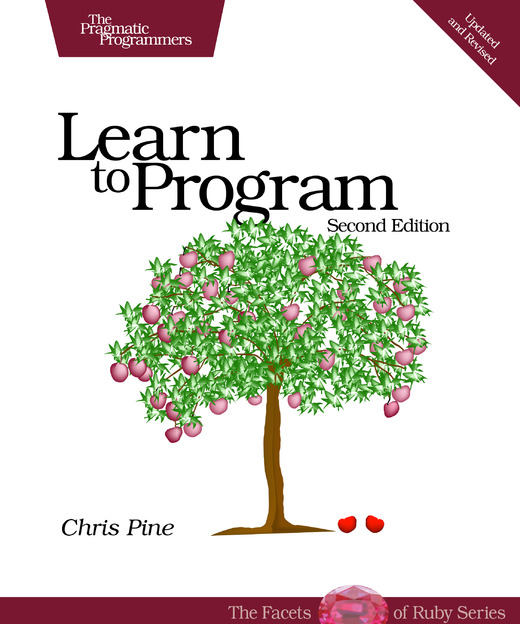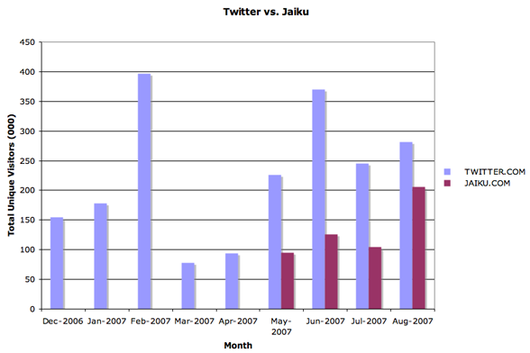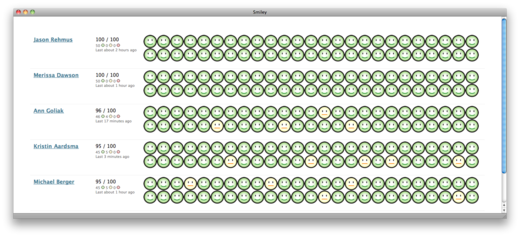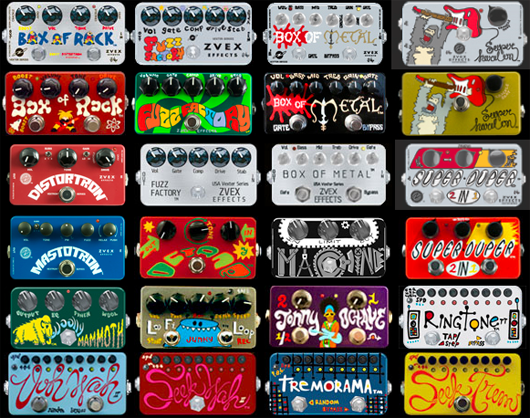
Learn to Program, by Chris Pine is a wonderful introduction to programming. I recommend this book to everyone that asks me how to get started.
You’re reading Signal v. Noise, a publication about the web by Basecamp since 1999. Happy !

Learn to Program, by Chris Pine is a wonderful introduction to programming. I recommend this book to everyone that asks me how to get started.
In a recent episode of 30 Rock, Jack Donaghy has dreams of making the cover of Meeting Magazine.
Jack [to Liz Lemon]: In addition, I have a huge presentation coming up — Meeting Magazine is already calling it the first great meeting of the decade.
[Later in the episode]
Jack: Lemon, I am supposed to represent NBC in a negotiation that Rex Belcher, of the American Journal of Meetings, rated ‘Four Chairs.’ Four!
Liz: I’m sorry, is there another magazine about meetings?
Guess what? There actually are multiple publications devoted to meetings. For example, Convene and Meetings & Conventions Magazine. Can’t find anything on The American Journal of Meetings though.
According to veteran photographer David Hobby, the old guard in the professional photography world is too paranoid. “There’s a lot of information-hoarding, and [a sense that] if I teach this person how to do this, he’ll become my competition.” Hobby’s gone the other way and educates aspiring shutterbugs with his free Lighting 101 course and blog posts at Strobist. He offers cheap solutions and lessons on how to get good lighting from portables flashes, cereal boxes, and ball bungees. He believes lighting is about “what you do with it, not what you spend on it.” It’s working too: He sold $1 million in tickets on a recent tour, hundreds of thousands read his posts each month, and manufacturers have even named lines of equipment after him. [thx JK]
“Why Work Doesn’t Work” is a CBC interview with Jason Fried. He discusses the workplace, sane work hours, and meetings vs. communicating with passive communication tools (i.e. ones that don’t require interruptions).
Communication doesn’t always have to be in real time. It can be in what we call “slow time.” You can post something and three hours later someone can get back to you and then four hours later someone else can get back to you. And everything will work out just fine.
Slow time is “Maybe it takes two or three days to have this conversation. And we do it over periods of 15 minutes here, two minutes there, four minutes there.” And that’s fine. It doesn’t need to happen all at once. Unless it’s really, incredibly, truly urgent. (Which most things aren’t. They’re made out to be that way, but they really aren’t that important.)
Meetings basically make things happen all at once. And that means you’re pulling a bunch of people off their work to have this “right now” conversation. It’s very disruptive for a bunch of people. So if they can communicate over a long period of time instead, it’s much better.
I think companies would benefit from giving employees a lot more autonomy and alone time to do their work. And then when they do need to come together, it can be more special and more meaningful. It’s like seeing an old friend you haven’t seen for a long time – it’s kind of a special moment for a couple hours and then you go break up and go back to your own lives and that’s fine. And that’s how we like to treat our work here.
We also try to have sane working hours. And four day workweeks during the summer. What we’ve found is that when people have fewer hours to work, they put more time into the work. It’s like anything. If you have less of it, you conserve it a bit more. You use it better. If you have fewer dollars left, you’re probably not going to go out and buy a big screen TV if you don’t need one. You’re going to put those dollars to work in a more efficient manner. It’s the same way with time. If you only have 32 hours this week to get something done, you’re not going to waste time.
Related
Don’t break Parkinson’s Law (i.e. “Work expands so as to fill the time available for its completion.”)
Note: Text above condensed and compiled from various answers. Listen to the full interview.
“Jaiku was not much more than a year old when we were acquired. It was like hitching a ride on a firecracker!” says Jyri Engeström, co-founder of Jaiku.
“I poured my heart and soul into designing the service with our small team,” he says of the microblogging tool similar to Twitter. “As a sociologist I was convinced microblogging had the power to change society (see Egypt) — and I thought we would keep building the company for a long time. But we didn’t anticipate usage would explode so fast. Our back end had scaling issues, and our mobile client was for Nokia’s Symbian phones, which turned out to be an impossible platform to develop for.”
 So in October 2007, Jaiku agreed to a sale to Google (rumored purchase price: $12 million).
So in October 2007, Jaiku agreed to a sale to Google (rumored purchase price: $12 million).
At the time, Engeström (right) and co-founder Petteri Koponen wrote, “Our engineers are excited to be working together [with Google] and enthusiastic developers lead to great innovation. We look forward to accomplishing great things together.” Google Product Manager Tony Hsieh wrote, “We’re excited about helping drive the next round of developments in web and mobile technology.”
A time of excitement
Looking back, Engeström remembers the excitement of those days. “We joined Google with the assumption we’d build a new, more scalable service that would be tightly integrated with a small project called Android, which I thought was the best thing to happen to the mobile industry and was led by Andy Rubin, who had the cojones to take over the world,” he says.
“At the time, most people still thought microblogging was a passing trend: superfluous status messages a small population of geeks texted to each other on their Sidekicks and Treos. I was convinced microblogging was the defining social innovation of the decade, and that it would become ubiquitous with the oncoming age of smartphones; so it was exciting to think we could leapfrog to a completely different scale and have Google’s near-infinite engineering resources behind us to meet the exploding demand.”

Unique visitors at Twitter and Jaiku back in 2007. (Source: VentureBeat)
Industry insiders also felt the prospects for the collaboration were bright. RWW’s Marshall Kirkpatrick wrote, “With easy group creation, RSS import and threaded conversation, amongst other features, Jaiku is probably a superior service to Twitter.” A Softpedia piece said, “One thing is sure: the Jaiku products will be improved a lot.” Even Biz Stone, cofounder of Twitter, had kind words for the deal: “Those guys have a keen grasp of mobile, and it’s probably a good fit for whatever Google’s cooking up.”
Closed to new users
But after the purchase, Jaiku was closed to new users and quickly slipped into “the Google black hole,” according to reporter Farhad Manjoo. Three months after the acquisition, signups were still closed. Engeström wrote on the company blog: “To be honest, a lot of our time in the early going was spent on getting to know Google.”
David Lawee, the Google Vice President in charge of acquisitions, told Manjoo that moving a new company onto Google’s systems takes 3-6 months and enables scaling. But problems continued after that time frame for Jaiku. After ten months, Jaiku was still closed to new users and existing users were complaining it was too slow. Engeström responded, “We feel the short term pain, too.” All the while, Twitter was gaining traction.
Then, in January of 2009, Google’s Vic Gundotra announced changes to Jaiku: “We are in the process of porting Jaiku over to Google App Engine. After the migration is complete, we will release the new open source Jaiku Engine project on Google Code under the Apache License. While Google will no longer actively develop the Jaiku codebase, the service itself will live on thanks to a dedicated and passionate volunteer team of Googlers.”
But nothing much really happened after that. The site is still up but its blog hasn’t been updated since 2009. The About page says, “The service is maintained by volunteer Google engineers on their spare time.”
Continued…
Today the customer support team team knocked it out of the park- zero frowns in the past 250 customer ratings!
We’re looking for a sixth person to join our Customer Support team. You’ll join Kristin, Michael, Merissa, Ann, and Jason in making our customers happy. This is a world class team of great people.
You’ll provide “it was so good they couldn’t stop talking about it” customer service via email for Basecamp, Highrise, Backpack, and Campfire. You’ll also be responsible for chiming in on 37signals Answers and updating and improving the articles in our help section. We’ll also be exploring phone support and in-person training shortly, so that should be something you’d like to do as well.
You’ll be expected to answer about 75 emails per day once you’re fully up to speed (2-3 months on-ramp). This is a significant volume, so be sure that you’re ready and able to deal with that kind of daily load.
We’re looking for someone who loves to help others, someone who can keep smiling even when dealing with tough customers (empathy is important), and someone who has a passion for our products and company. You should enjoy the process of making an anxious customer a happy customer.
In addition, you have to be an excellent writer who enjoys writing. Our customers love when we get back to them within 10 minutes with a clear, concise, and friendly answer. Great writing is key.
Please submit a cover letter explaining:
Also, attach the following writing samples:
We offer health-care coverage, a 401K with a generous match, a Flexible Spending Account, plus a progressive work environment. We’d prefer someone in Chicago, but we’re open to hiring the best person no matter where they live. Starting salary is $45k.
Email everything to [email protected]. Include “Customer Support” in the subject line. If you’re attaching a resume, please send it as a PDF. Note: We look favorably on people who get creative with their applications.
We look forward to hearing from you.
During the NCAA basketball tournament I heard announcer Jim Nantz telling viewers to go to CBSsports.com for “tournament related social media.” A week later I noticed a category at Maria Shriver’s site for “social media.”

Strange thing is I’ve never heard a non-tech person use the phrase “social media.” Normal people mention being friends on Facebook or reading someone’s tweets on Twitter. They don’t say, “I want to get some social media.”
It’s a good reminder of how easy it is to get caught up in industry jargon and how we talk instead of how they (i.e. customers) actually think/talk. The phrase you use internally isn’t necessarily the one you should use with the outside world.
It isn’t true at all that nobody’s buying Flip camcorders. So far, seven million people have bought them…Flips now represent an astonishing 35 percent of the camcorder market. They’re the No. 1 best-selling camcorder on Amazon. They’re still selling fast…
[Flip] reaped the rewards that come from selling to a megalithic corporation like Cisco. Yes, there was plenty of money to go around, but also the risk that always comes when you sell to a bigger company: that they’ll chop you up and sell off your parts.
Or, in Cisco’s case, much worse: chop you up and leave you for dead.
Billy Corgan, Jack White, Trent Reznor, The Edge, Daniel Lanois, Joe Perry. They’re just a few of the big name guitarists who swear by the strange sounds, textures, interfaces, and custom paint jobs of Zachary Vex’ boutique effects pedals.
“Being weird makes me stand out from other pedal manufacturers,” Vex says. “Weird sounds get people talking. There are a number of musicians who want to produce sounds that make them stand out from the crowd. Our stuff appeals to those players.” And those players are willing to shell out too: The pedals cost between $250 and $500 each.

The light bulb moment
The first pedal Vex ever built was formed out of a small plastic fishing tackle box. “My older brothers got me into electric guitar and they worked at an injection molding company so we had lots of these plastic boxes around, and they and my cousins played through a Maestro Fuzz Tone at my uncle’s house, which I found extremely exciting-sounding,” says Vex. “In high school I heard that sound again. A student was in a practice room with a guitar, amp, and some little box with sliders on it which sounded identical to a Jordan Boss Tone. I knocked on the door and introduced myself, and he explained he’d broken his Jordan enclosure so badly he had to re-house it. A light bulb went off for me. I realized I could build my own effects. I used a schematic from an article in Popular Electronics (my mom got me the subscription) and built my first fuzz in 10th grade, and sold it to that student for $10 a few weeks later. He loved it.”
Vex then went on to build and sell tube amps and amp modifications throughout the 1980s. He did electronics tech work, owned a recording studio from 1985 to 1991, and then worked as an independent recording engineer/producer until 1995. That’s when he started Z.Vex Effects.
Startup funds came from a strange source; The city paid Vex to relocate him and his roommate from their loft because a Federal Reserve Bank was being built next to the property. Vex lived off that money for a couple of months and was able to take a break from recording to work on electronics.
Vex: “My first Z.Vex pedal was an improvement on an Apollo Fuzz-Wah fuzz, which was the Octane. I showed it to Nate at Willie’s American Guitars in St. Paul and he immediately ordered three. I hadn’t planned on going into business, it just happened by accident. I started making a living within about two months after the pedal company started. A meager living, but a living. I believe my apartment was about $300 a month.”
“Being weird makes me stand out from other pedal manufacturers.”Continued…